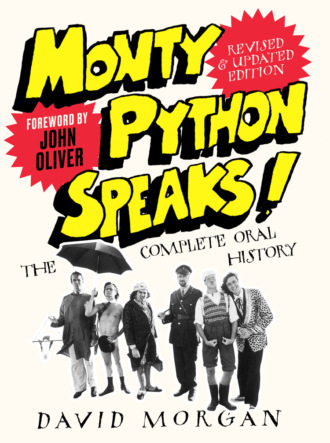Monty Python Speaks! Revised and Updated Edition: The Complete Oral History

Полная версия
Monty Python Speaks! Revised and Updated Edition: The Complete Oral History
Язык: Английский
Год издания: 2019
Добавлена:
Настройки чтения
Размер шрифта
Высота строк
Поля
Конец ознакомительного фрагмента
Купить и скачать всю книгу

